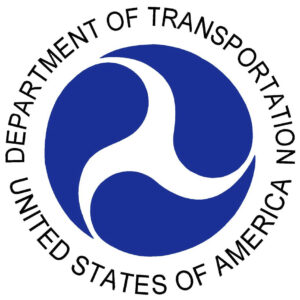Written on: June 1, 2015 by SprayTM
 In my article from the April 2013 issue of SPRAY titled “If You’re Planning on a Special Permit…Plan Early,” I explained some of the delays in processing Special Permit applications and some of the new permit application processes that the U.S. Dept of Transportation (DOT) now requires. The focus of that article was on Special Permits, or authorizations granted by DOT’s Pipeline & Hazardous Materials Safety Administration (PHMSA), whereby the applicant is permitted to deviate or be excepted from one or more provisions in the Hazardous Materials Regulations (HMR), subject to an equivalency of safety.
In my article from the April 2013 issue of SPRAY titled “If You’re Planning on a Special Permit…Plan Early,” I explained some of the delays in processing Special Permit applications and some of the new permit application processes that the U.S. Dept of Transportation (DOT) now requires. The focus of that article was on Special Permits, or authorizations granted by DOT’s Pipeline & Hazardous Materials Safety Administration (PHMSA), whereby the applicant is permitted to deviate or be excepted from one or more provisions in the Hazardous Materials Regulations (HMR), subject to an equivalency of safety.
Special Permits apply within U.S. jurisdiction. Competent Authority Approvals (CAAs) are slightly different animals. CAAs are similar to Special Permits, but are applicable to the international transport of dangerous goods; they are also subject to an equivalency of safety, but are only enforceable within the jurisdiction of the country issuing the approval.
It is presumed that a CAA would be accepted by the receiving country’s Competent Authority through a reciprocity agreement, but this is not the case. It is important that an approval of the CAA is obtained from the country that is receiving the dangerous goods. In some cases, the other Competent Authority may issue an approval of its own.
I recently submitted a request for a renewal of a CAA that had been issued to my client in 2001. The CAA had been modified a couple of times since the original approval was issued by the Research & Special Programs Administration (PHMSA’s predecessor), and it had been renewed every four years after the initial approval was granted.
 Changes in the Approval Process
Changes in the Approval Process
However, my renewal request encountered some rather stiff resistance. I had filed hundreds of applications for CAAs on behalf of clients since I began consulting on the transport of dangerous goods back in 1995, so the process was not new to me. I was being asked for information that is typically required for Special Permits such as; (1) whether or not the Petitioner was a shipper or carrier, or both; (2) the Petitioner’s Dun & Bradstreet (DUNS) Number; (3) estimated number of shipments made, or to be made in the future; and (4) a certification that the original application, as amended, was true, accurate and complete.
The information requested was coming from the requirements of 49 CFR §107.105, which apply to Special Permits, and not from 49 CFR §107.705, which applies to registrations, reports and applications for approval.
When I challenged the agent as to why PHMSA was requiring information typically required for Special Permits when I was not seeking one, but rather a CAA, I was told that I must “…provide additional information as requested by the Associate Administrator per 49 CFR §107.705(a)(7).”
Huh? After a rather lengthy discussion about the Special Permits vs. the CAA process, I was told that the “…office was trying to align the two sets of requirements.” Aha!
Therefore, in anticipation of this recent change in procedure, which hasn’t been published in an Advanced Notice of Proposed Rulemaking (ANPRM) or Notice of Proposed Rulemaking (NPRM) that I am aware of, I’ve decided to caution potential applicants and to advise them to be prepared to provide the following information, should it be requested. In fact, it may be worth providing anyway, as it is better to provide too much information (in this case) than to suffer a delay in the processing of the application.
 Special Permits
Special Permits
For Special Permits, applicants you should provide the following:
The application must also include information required in sections 49 CFR §107.105 (c) and (d), including a description of Special Permit proposal and a detailed justification of Special Permit proposal.
Competent Authority Approvals
For CAA application, consider providing all of the information described herein for Special Permits, as well as the following:
In addition, the applicant must provide the following:
For an approval which provides exceptions from regulatory requirements or prohibitions: